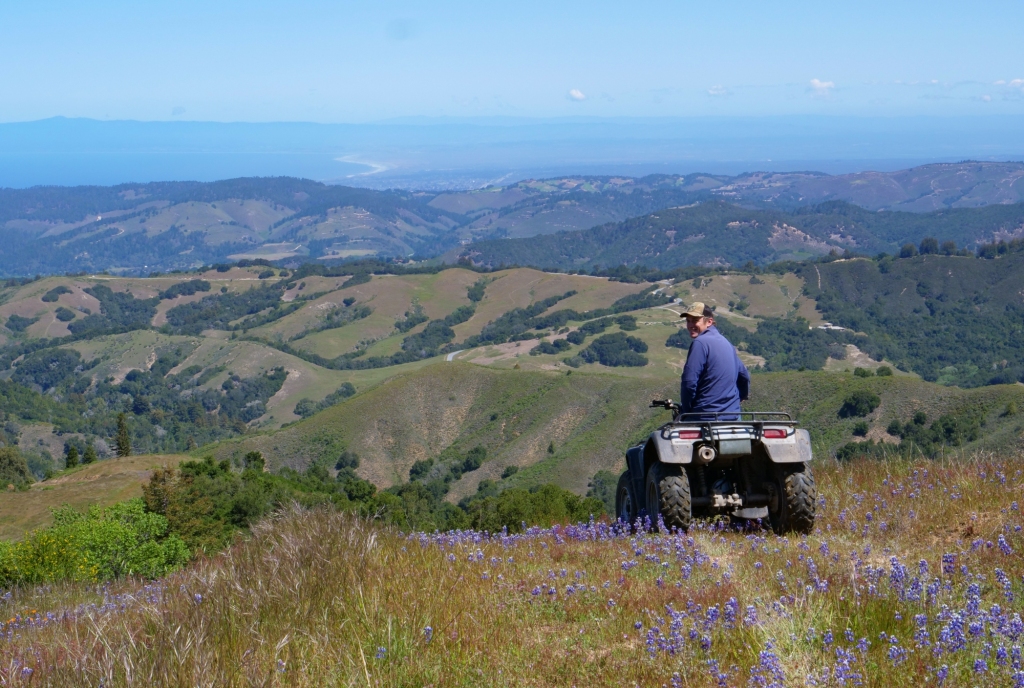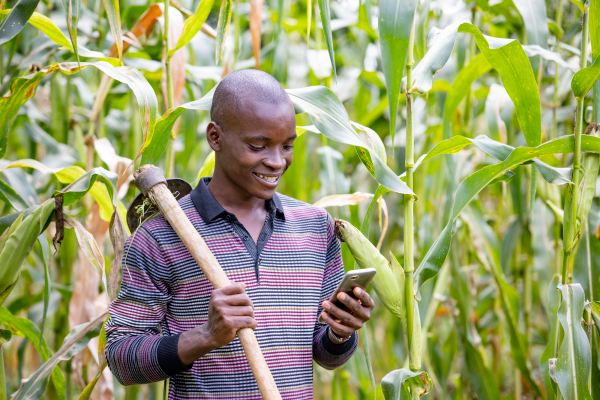CARMEL VALLEY — Luke Gardner spends workdays surrounded by bubbling vats of seaweed and tanks of abalone at Moss Landing Marine Lab but trades his lab coat for work boots on weekends to head to his cattle ranch.
Although cows and aquaculture might seem like two utterly distinct interests, Gardner has found a clever way to combine them to tackle one of humanity’s most pressing problems: climate change.
Gardner and his wife began ranching in 2014 when they took the reins from his father-in-law. In the rolling hills above the Carmel coast, he grazes about 100 cattle on land owned by the Monterey Peninsula Regional Park District.
“I became much more aware of cattle ranching and the realities of it,” he says, “including the environmental impacts.”
The key to solving one of those impacts – the heat-trapping, gaseous burps of cattle – might just lie in Gardner’s soupy vats of seaweed growing at his lab.

In some ways, the grazing cattle is beneficial, as Gardner moves them around under the guidance of biologists to help maintain coastal prairie habitat – California’s native grasslands which support several endangered species, and which have declined 99% since European settlement.
But cattle are also warming the planet. A single cow burps more than 200 pounds of methane in a year, a powerful greenhouse gas that contributes to climate change as it lurks in the atmosphere.
So Gardner, an aquaculture scientist, is identifying native seaweeds that can be added to cattle feed to soothe their gassy gut.
Having an appreciation for the realities of ranching, he believes, puts him in a good position to join different interests together to find solutions to a common problem.
“What makes a cow somewhat amazing and able to turn grass into milk and meat is that they have a rumen – a bunch of different stomachs with different organisms that break down the grass,” he says. “But in the process, it releases methane into the atmosphere.”
Methane is a greenhouse gas 25 times stronger than carbon dioxide, and cow burps are one of the leading sources worldwide. The majority of methane emissions in the state come from cattle – more than 1.4 million dairy cows and 1 million beef cattle.
California aims to reduce methane emissions by 40% by 2030 and soothing the digestive tracts of cows is a key piece to the puzzle. Gardner’s seaweed pursuit isn’t a mythical quest, as the seaweed Asparagopsis taxiformis was found by Australian researchers to reduce methane in cattle by more than 80%.
Unfortunately, this tropical seaweed isn’t yet a panacea. “While it might do amazing things, we don’t actually know how to culture it,” Gardner explains.
Gardner seeks to find a native California species with the same methane-reducing power, but that can also be grown easily in aquaculture settings.

As an extension specialist with California Sea Grant, part of Gardner’s job is to find sustainable ways to support aquaculture development in the state. Seaweed aquaculture doesn’t yet have a strong demand domestically, but with no shortage of cows and a growing need to address their gaseous emissions, Gardner sees a golden opportunity. The right seaweed could reduce greenhouse gasses, support local aquaculture farms, and even improve the bottom line for ranchers and dairy farmers.
“The hope is to be able to test some of these concepts and show that aquaculture can be not just commercially beneficial, but beneficial to the public interest and the environment,” he says. “It’s just a question of can we find a seaweed that works?”
Researchers are exploring the power of seaweeds to apply to a wide range of environmental benefits, including reducing water pollution and harmful algal blooms, acting as energy barriers for sea level rise, and sequestering carbon.
“Seaweeds have all sorts of different things going on,” Gardner says. “They’re kind of like the Amazon rainforest, in terms of holding potential bioactive compounds that could lead to solutions for current and future issues.”
Conscious of the typically razor-thin profit margins of cattle ranching, he knows that seaweed would have to be cost-effective to encourage ranchers to feed it to their cows. But he hopes that reducing methane in a cow’s gut will also make their digestion more efficient, and help the rancher’s bottom line.
The research is still underway, but some native seaweeds showed promise at methane reduction in a lab setting. Gardner is now growing these in large tanks at Moss Landing to find the right recipe for their optimal growing conditions. The final step will be to grow enough seaweed to feed to cattle while keeping them in “basically a giant burp chamber” to measure their methane emissions.

Cattle ranching was far outside of Gardner’s scientific pursuits and early life in suburban Australia. He says that Youtube videos and UC Extension guides helped him gain the key skills – bull castration included. But bridging land and sea could make Gardner a crucial link for finding realistic solutions to the puzzling, global problem of gassy cows.
“While the ranchers might not have any inkling of how aquaculture could do this,” he says about the seaweed study, “the aquaculturists also have little understanding of how the ranching industry works.”










